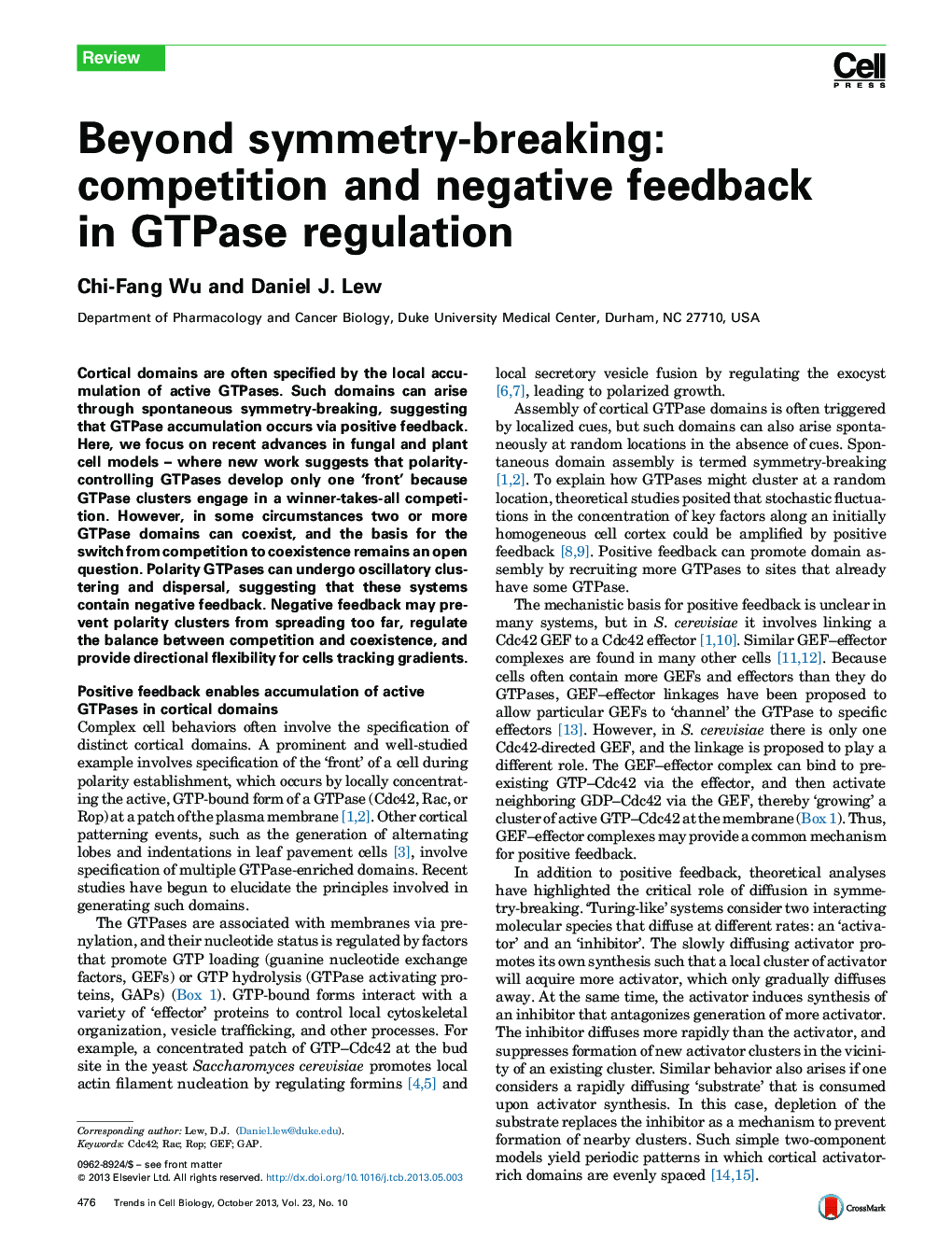| Article ID | Journal | Published Year | Pages | File Type |
|---|---|---|---|---|
| 2204544 | Trends in Cell Biology | 2013 | 8 Pages |
•Positive feedback enables the formation of cortical domains enriched in GTPases.•Competition between polarity GTPase domains assures a single winner.•In other cases, coexisting domains indicate an absence of competition.•Oscillation of GTPase levels within domains suggests the presence of negative feedback.•Negative feedback could confer robustness and influence competition.
Cortical domains are often specified by the local accumulation of active GTPases. Such domains can arise through spontaneous symmetry-breaking, suggesting that GTPase accumulation occurs via positive feedback. Here, we focus on recent advances in fungal and plant cell models – where new work suggests that polarity-controlling GTPases develop only one ‘front’ because GTPase clusters engage in a winner-takes-all competition. However, in some circumstances two or more GTPase domains can coexist, and the basis for the switch from competition to coexistence remains an open question. Polarity GTPases can undergo oscillatory clustering and dispersal, suggesting that these systems contain negative feedback. Negative feedback may prevent polarity clusters from spreading too far, regulate the balance between competition and coexistence, and provide directional flexibility for cells tracking gradients.
